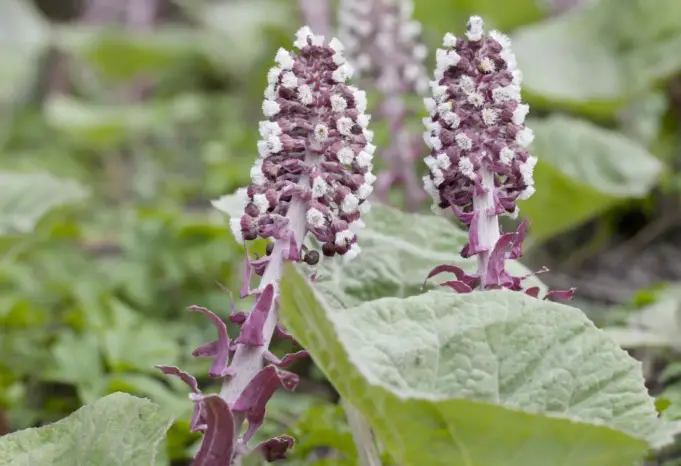Butterbur is a perennial plant. It is native to Europe and Asia. It grows close to forests and along rivers, streams and other water bodies and wetlands required to develop.
This medicinal plant reaches a height of 20 to 50 cm, has a thick rhizome, flowers are soft pink. Its scientific name is Petasites officinalis and belongs to the family Asteraceae.
Butterbur has medicinal qualities effective as an antispasmodic, analgesic, gastric protective, hypotensive, and diuretic. The active ingredients in butterbur are at the root.
This plant has medicinal properties to treat conditions such as pain in the sinuses, frontal sinusitis, nasal congestion, renal colic, biliary colic, back pain, menstrual pain, spasms of stomach and bowel irritation, urethral, orchitis, peptic ulcer, inflammation of the spermatic cord.
It is also used for problems from migraines, asthma and bronchial disorders such as bronchitis, emphysema, cough, hoarseness, flu, bone problems such as dislocations or dislocation, hypertension, gout, nervous disorders such as anxiety, nervousness, anxiety and insomnia.
This medicinal plant should always be used to control doctors to prescribe the right dose. Since an overdose or prolonged use can cause contraindications such as severe problems in the liver and gastrointestinal mucosa, loss of appetite, abdominal pain.
Pregnant women, children and people with chronic conditions such as low blood pressure should not self-medicate. Natural medicine is effective but you have to use it can have negative effects on health.
Recipes from this medicinal plant:
External use: Can be used in dressings for external use, tincture that can be bought in pharmacies can take 30 drops three times daily.
Infusion: You can also make a tea with ¼ pint of boiling water and 2 teaspoons of the herb is then allowed to stand for several minutes, filtered and it’s ready to drink. It may take 1 or 2 cups a day.












